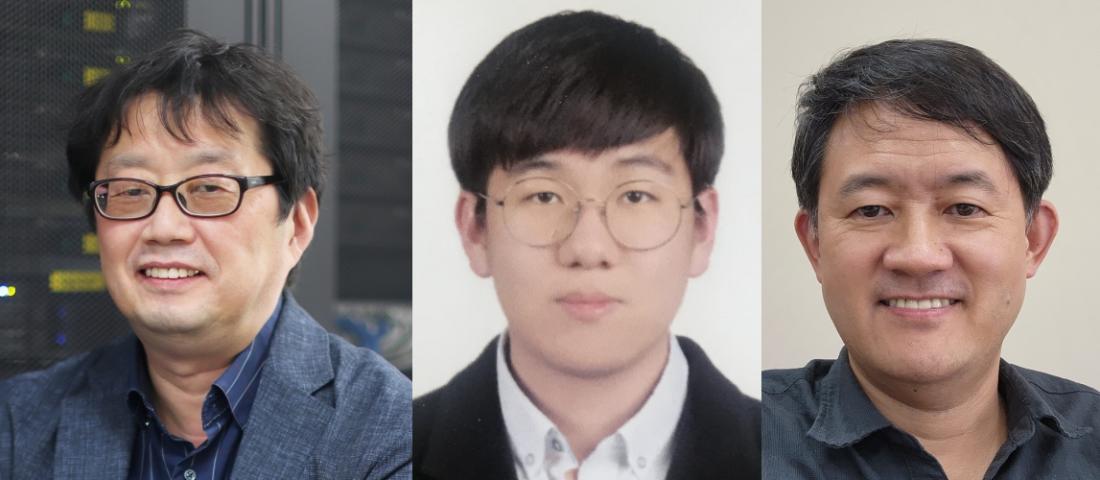□ The Academy-Research Integration Research Team, including Jae-dong Lee, Professor at the Department of Physics and Chemistry, and Hyun-min Kim, Director of the Division of Biotechnology, of Daegu Gyeongbuk Institute of Science and Technology (DGIST), led by President Yang Kuk, developed super-resolution non-linear hyper-spectral imaging technology. This method is an outstanding outcome of the joint research by the Academy and Research divisions, and a research paper on it was published in PhotoniX, an international academic journal that ranks in the top 4.5% of optic-related journals.
□ Existing optical microscopes have a physical diffraction limitation. Optical microscopes equipped with light sources using incident waves cannot distinguish the size of objects placed less than half the wavelength of light or the distance between them. To overcome these problems, research on using fluorescent materials as an alternative to incident waves have been conducted. However, challenges caused by the use of fluorescent materials, such as phototoxicity and biological interference, have emerged as challenges.
□ To surmount these challenges, DGIST’s Academy-Research Integration Research Team carried out research on using[1] a focus control method to reduce the solution of optical microscopes to the range below the diffraction limit. In particular, Hyun-min Kim, Director of the Division of Biotechnology, played a crucial role in guiding related research, drawing from his continuous investigation of a technique that reduces the focus size to enhance the resolution of an anti-Stokes Raman[2] microscope. Furthermore, the research team used the results of the National Institute of Standards and Technology’s study on solving focus control problems based on confocal technology, which significantly contributed to the development of the new method.
□ In the process of designing a method to enhance the resolution of an anti-Strokes Raman microscope through focus control, Kim conducted collaborative research with Professor Varun Ragunathan at the Indian Institute of Science (IISc). In this research, they confirmed that techniques of applying different non-linear optical phenomena, such as sum-frequency generation, and small pinholes can be used to eliminate focus blur issues of focus control methods and achieve a lateral resolution of below 100 nm on a plane. Based on these research findings, they published a research paper in Optics and Lasers in Engineering, an international academic journal.
□ The Academy-Research Integration Research Team conducted further research based on Kim’s research achievements, leading to the development of a new technology that can also be applied to cross-sectional imaging of samples. When applied to hexagonal boron nitride (hBN) nano sheets, the developed technology can reduce the resolution in the cross-sectional direction by nearly half. As a result, it facilitates the analysis of dynamics of electron and molecular vibration at the interface or between interfaces based on the unit of femtosecond by achieving the resolution below the standard of the diffraction limit, which had previously been unattainable. This technology, first introduced in the corresponding field, is regarded as a groundbreaking achievement in developing and analyzing low-dimensional materials at the quantum level.
□ Jae-dong Lee stated that “this research holds immense significance in that it has led to the development of a technology that can analyze high-speed electrons within considerably thin components in extreme environments by using hBN nano sheets.” He added, “this achievement was made possible thanks to the systematic establishment of DGIST’s Academy-Research Mutual Growth programs based on both the Academy and Research divisions, such as UGRP, URP, and graduate school internship programs. We anticipate that significant outcomes will continue to emerge through academy-research integration research.”
□ This research was conducted with the support of the National Research Foundation of Korea through the Mid-career Researcher Program., Gwan-jin Lee, a student currently enrolled in the Integrated MS & PhD Degree Program of the Department of Physics and Chemistry, served as the lead author of the research paper. This research paper was published in PhotoniX (IF: 16.5, top 4.5%), a prestigious international academic journal in optics.
corresponding author E-mail Address : [email protected]
[1] Resolution: The finest discernible difference of a signal that can be used as an indicator for the limit performance of an indicator for the limit performance of a signal measurement method or device.
[2] Anti-Stokes Raman: The phenomenon where light, which has higher energy than the incident light, scatters when physical light passes through matter with a radiant ray being scattered.



